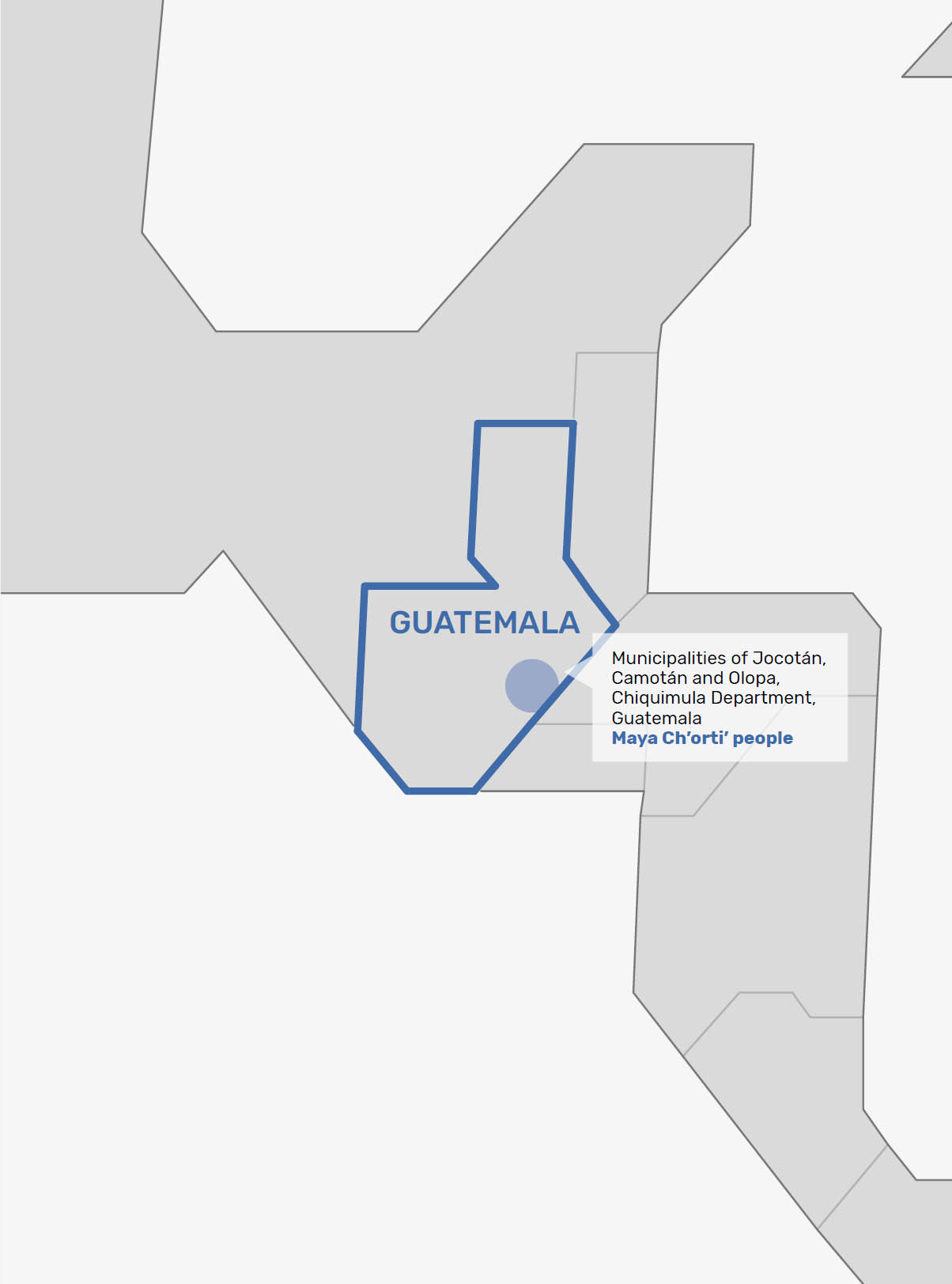Chapter 8. The maize people in the Mesoamerican dry corridor Milpa food system of the Maya Ch’orti’ people in Chiquimula, Guatemala
At a glance
This study characterised the food system of the Maya Ch’orti’ in eastern Guatemala who refer to themselves as a campesino pueblo, which is also the name of the rural farming villages in which they live. The Maya Ch’orti’ are one of the ancestral Maya ethnic groups in the area. The current food system has evolved under an ancestral model based on respect for life in all its forms and natural resources. The diets of Ch’orti’ communities are largely sustained by mixed agroforestry, home gardens, milpa production systems and the gathering of wild foods. Communities are custodians of local agrobiodiversity, continue to have closed-loop systems of biodegradable household waste cycling, and maintain a profound knowledge of multi-use plant species. The Ch’orti’ face many challenges, including those created by climate change, that are contributing to the breakdown of traditional ways and increasing instances of crop loss. Notably, a transition of the milpa system from an ecologically self-regulating plot with multiple yields to a low-diversity model with high off-farm inputs has reduced the availability of food for household nutrition. Strong values based in community well-being, trust, respect of natural resources and alternative trade networks have helped provide safety nets in times of scarcity. Inclusive self-organization bolsters sustainability of the system using ancestral principles, where decisions are made through community consultation and voluntary leaders who are elected based on merit and focus on the collective welfare. This system has increased representation of rural villages at a regional scale to protect and manage communal forests, rivers and other natural resources. Perspectives for a brighter future rest with young generations and their active engagement in building inclusive communities with better livelihoods and enough resources to have a “buen vivir” (good living).
“If we want to maintain our customs and traditions, we need to teach our children all our knowledge, so that the new generation does not lose the community values of customs and traditions and our language. If we do not teach them little by little, all the good of our times will be lost and forgotten.”
Reflections by community members during the thematic discussions
United Nations Geospatial. 2021. Map of the World. Washington, D.C., UN. [Cited 7 June 2021.] https://www.un.org/geospatial/file/3420/download?token=bZe9T8I9

